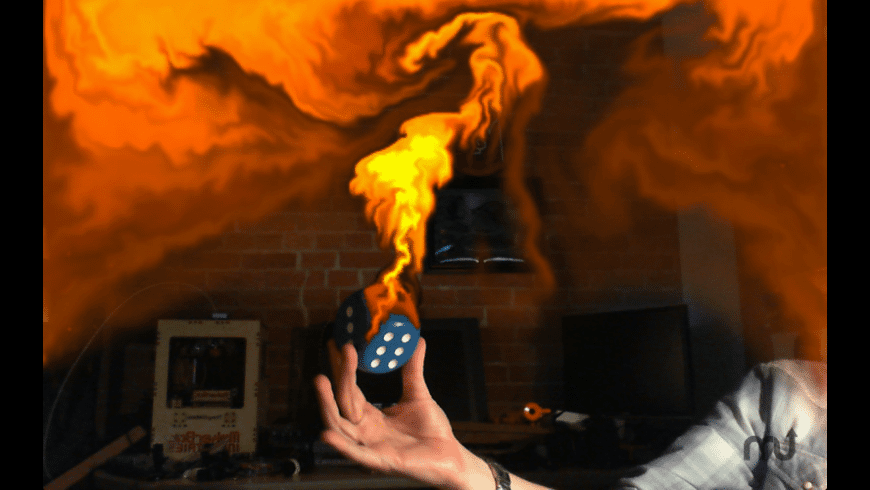

When the delay is set to zero, the tail curls up. Mark first achieved this effect when building Sammael's tentacle mane in 2004's "Hellboy." He realized that the cascading quality could be retrofitted to the Scrunt's tail. The more servos, the smoother the motion. So Mark linked up servos in a chain, then created a delay so each servo moved a little bit after the one before it, causing a chain reaction down the piece. These complex motions are used for movements like wagging or the curling of a tentacle. Narrator: When moving down to the Scrunt's tail, Mark encountered a very tricky motion challenge: cascading. Mark: It was necessary to punch up that expression, that there's no ambiguity about it, when this thing is snarling and it's angry, that those brows are selling that the creature is angry. Narrator: So Mark actually strayed from reality and based its eyebrows on human eyebrows. Mark: They're like these two points, and they move around, and they have whiskers sticking out of them. Unlike a real wolf, the Scrunt had a coat made of grass, so one of the most expressive parts of the face, the eyebrows, weren't coming through that thick layer.
SPECTRAL MOTION FX SKIN
Narrator: The skin itself posed a problem, however. Mark: And it looks a little odd here without the skin on, but when the skin's on, it looks very realistic. But those hard mechanics had to work hand in hand with the softer elements of the wolf's face, like these lips that pull up and expose the fangs. This piece here both pulls the nose back and lifts it up at the same time. And in 2006's "Lady in the Water," Mark and his team wanted to give the wolflike Scrunt an angry snarl. Soft mechanics are often used for animatronics that don't have traditional bones and joints, like the petals on the Demogorgon's head that Mark operated for "Stranger Things" or Edward the troll's tongue. These are cables embedded in the outer layer of animatronics. Narrator: The ways in which the mechanics and the outer layers work together are even more important when it comes to conveying emotions in the face. So the anatomy really has to be based on reality, and that's where the best mechanism designs start from. So, that joint appears to be right here, and anatomically, that puts it right behind this big fat pad right here. Let's put a little tension on there, like it would be in real life. Mark: The mechanical design starts with the sculpture. To achieve this, Mark worked with Spectral Motion's sculptors from the start to make sure their model went hand in hand with his servos. The upper palm had to line up perfectly with the knuckles. One motion Mark observed in his own hands: compression in this area. No matter how sophisticated the radio controls, the movements would feel off if each muscle and joint that made up a hand wasn't in exactly the right place. The work done on top of the servos is equally important. Running controls simultaneously for the thumb and index fingers, as seen in this early test video, created a pinching motion used to lift up the small object. Narrator: Toggling one joystick created a gesture or a point. So depending on how I map those, you can optimize the hand for doing different actions. In this case, you're mapping them to the finger joints. So you can map each axis of these joysticks to specific joints.

That means that there's a base knuckle, like this, and then there's these two phalanges here that can also move. Mark: Each finger actually has two degrees of freedom. Each hand had 10 servos spread throughout the fingers. As he moved the hands around, the subtle finger motions were created with radio-controlled hobby servos, like you'd find in a model plane. The performer who played Edward the troll wore two animatronic hands, but they were so large that the performer's hands only reached the troll's wrists. Movement is what really sells any animatronic character in a movie, so roboticists like Mark Setrakian work tirelessly to nail down realistic motions, like these gigantic troll hands from 2013's "Hansel & Gretel: Witch Hunters," which needed to move nimbly enough to convincingly pick up objects and throw punches. Narrator: To get here, Spectral Motion built a moving animatronic powered by motors known as servos, which was used as a reference for the visual effects team and even ended up in some of the final shots. Mark Setrakian: The creatures are not really conducive to having an actor inside. Narrator: This is an early test video for one of the White Spikes from 2021's "The Tomorrow War." But it's very different from what the viewer sees in the finished movie. Account icon An icon in the shape of a person's head and shoulders.


 0 kommentar(er)
0 kommentar(er)
